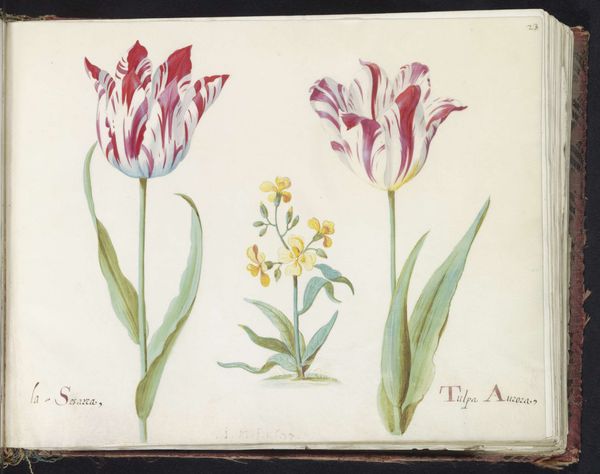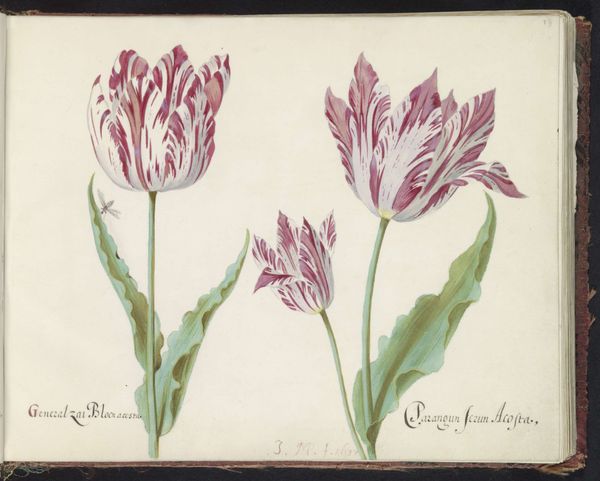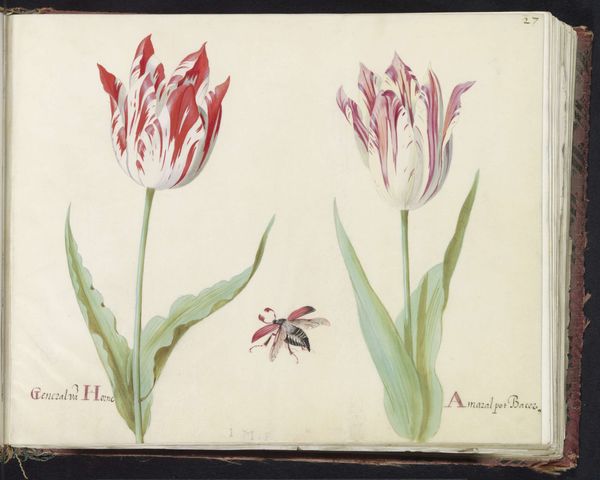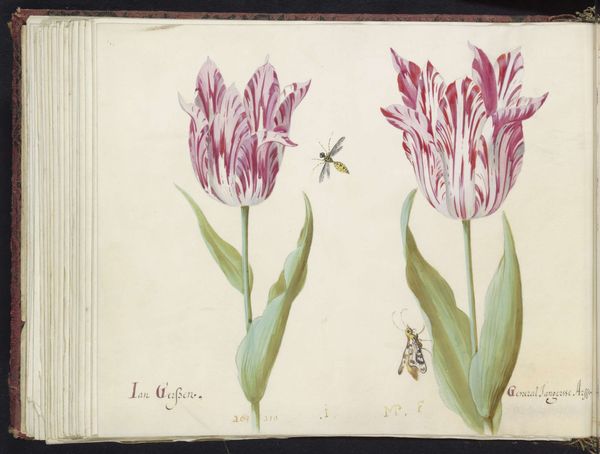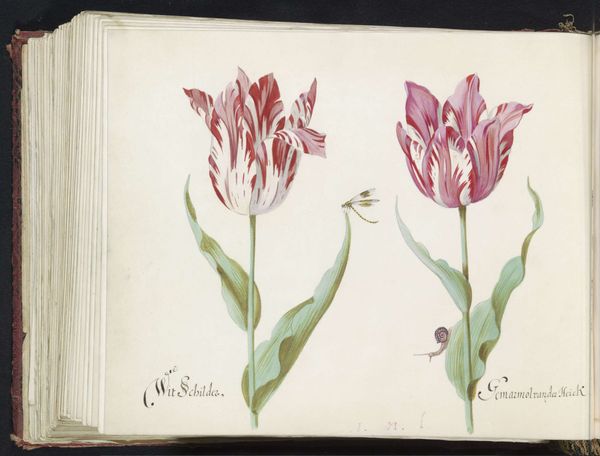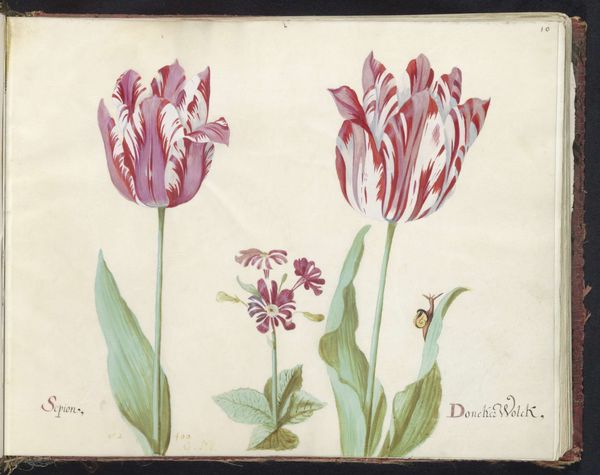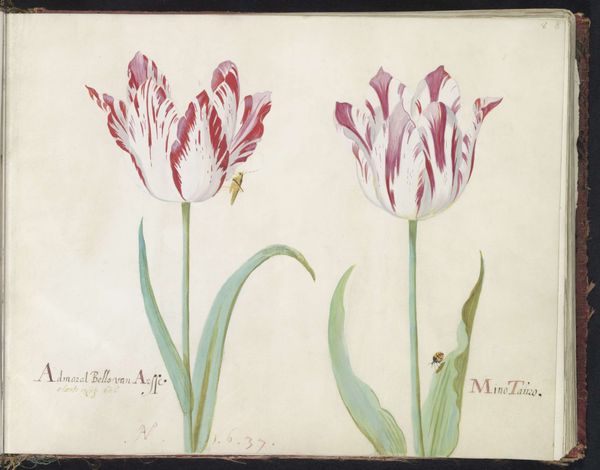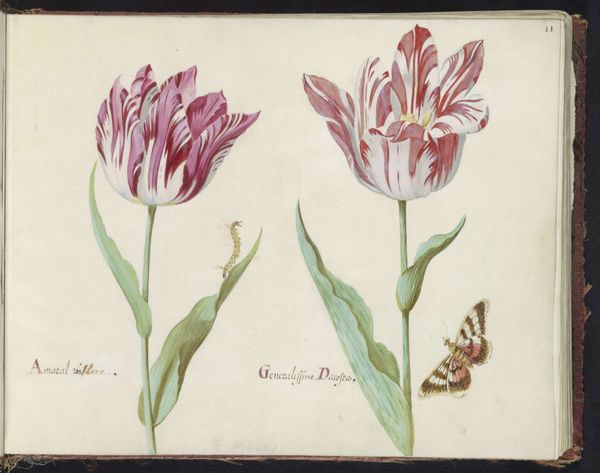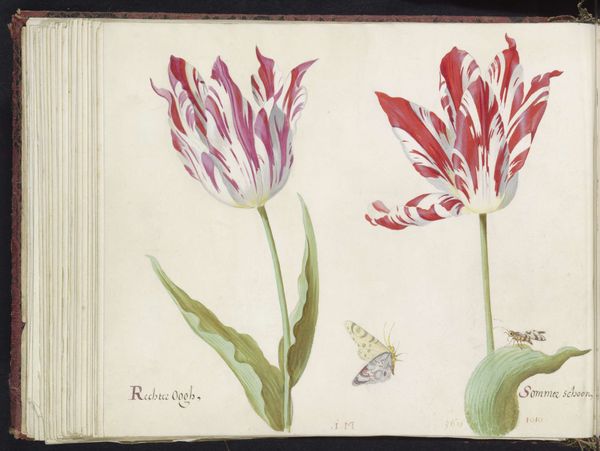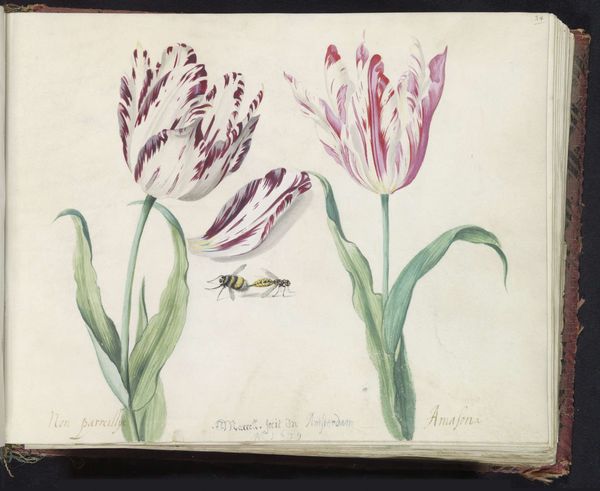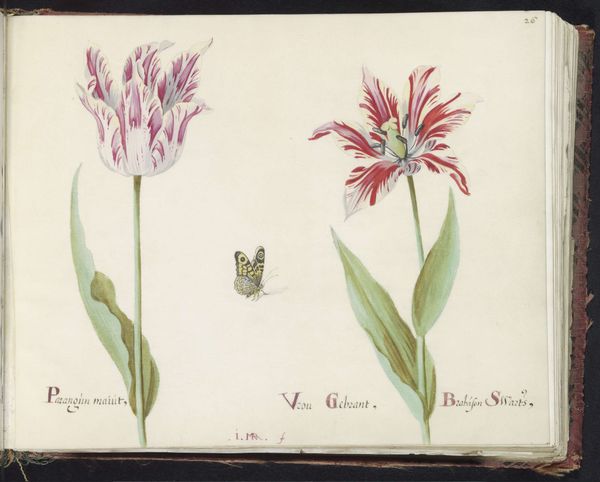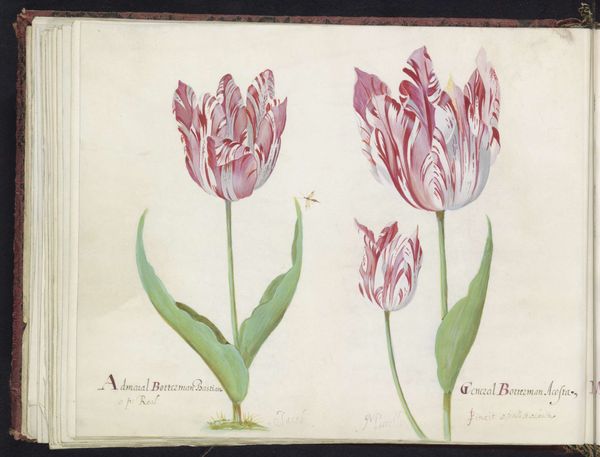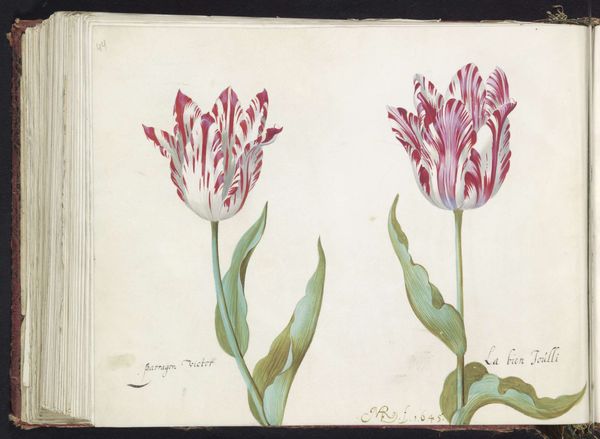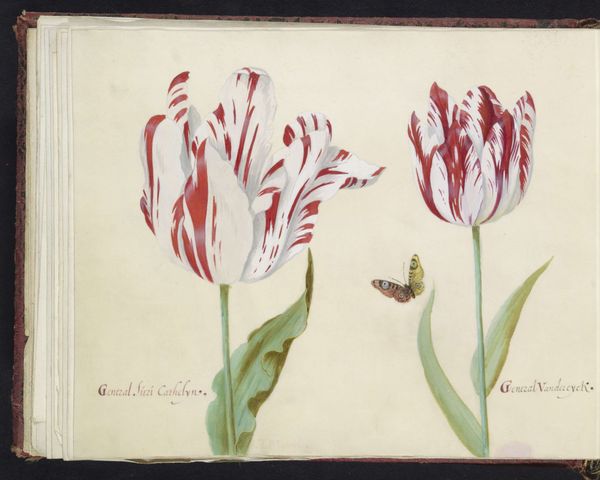
painting, watercolor
#
water colours
#
dutch-golden-age
#
painting
#
watercolor
#
watercolour illustration
#
botanical art
#
watercolor
Dimensions: height 265 mm, width 335 mm
Copyright: Rijks Museum: Open Domain
Editor: Here we have Jacob Marrel's watercolor, "Two Tulips with Unknown Flowering Plant," from 1637, currently at the Rijksmuseum. It's beautifully rendered and so delicate, yet the composition feels quite stark and…almost scientific, in its precision. What stands out to you when you see this work? Curator: What strikes me is how this image speaks to the intense cultural and economic fervor surrounding tulips during the Dutch Golden Age, the period in which this was made. It's not *just* a pretty picture; it’s a document reflecting tulip mania. Watercolors were favored in creating precise representations which drove commerce and global trade during this period. Editor: So, you're saying that the medium itself—watercolor—was integral to the booming tulip market? Curator: Absolutely! Its portability and ease of reproduction would've made pattern-books for horticulturalists very desirable. This also challenges the traditional separation of "high art" and craft. This type of work may be categorized within “decorative arts”. It's worth asking where we can locate “art” as such during this time and the types of labor practices which brought these goods to fruition. Think about the paper, the pigments, the very tools and skills required! Who had access to them, and under what conditions? Editor: That’s a perspective I hadn't considered. So, the art is less about individual expression and more about material accessibility, process, and labor? Curator: Precisely! By examining these facets, we understand its broader socio-economic implications beyond simple aesthetics. Editor: That’s given me so much to think about! It shifts the whole conversation away from the "art" and toward the realities of its production. Thanks! Curator: My pleasure! I encourage you to consider all the material forces that contribute to and are reflected in these kinds of objects.
Comments
No comments
Be the first to comment and join the conversation on the ultimate creative platform.
